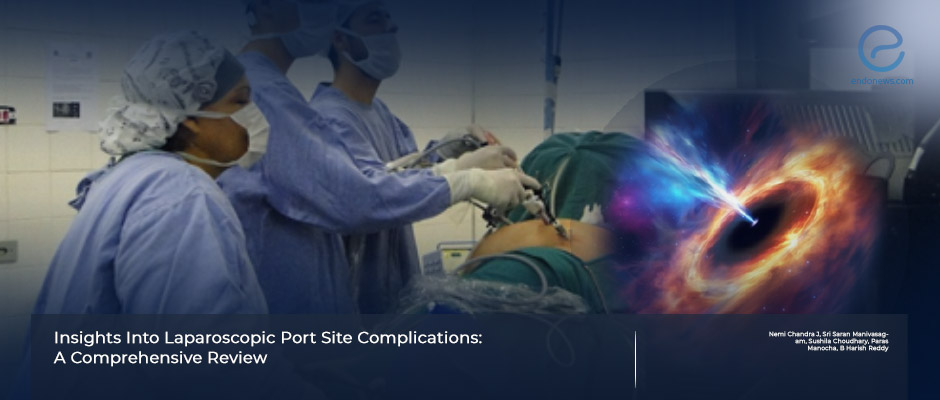Laparoscopic port site complications.
Oct 18, 2024
Infective, non-infective, or neoplastic complications could arise from laparoscopic ports.
Key Points
Importance:
- Port-site endometriosis is a rare complication of laparoscopic surgeries that can be prevented by using endo bags for specimen collection.
Highlights:
- To use smaller trocars, implement strict sterilization techniques and aseptic practices, employ non-porous sterile bags for specimen removal and to ensure meticulous closure of the rectus sheath to prevent hernias are important prevention strategies.
What's done here:
- This review is prepared from the data of 23 selected articles by using specific keywords and searching the literature from 1996 to 2024.
- The keywords searched in variaty of databases were 'port-side tuberculosis', 'port-site infection', 'hernia', 'port-site endometriosis', 'port-site metastasis', and 'port-site hydatid cyst'.
- Since laparoscopic port site complications are uncommon, the Indian author team reviewed every abstract about general laparoscopic operations in English literature.
- The authors aimed to explore the morbidity associated with laparoscopy's port side and discuss the risk factors for complications.
Key results:
- Prior to endo bag use, clinicians occasionally encountered painful masses at trocar sites in reproductive-age women post-laparoscopy, raising concerns about endometriosis.
- Port-site hernias can be prevented with smaller trocars and careful rectus fascia closure.
- Port-site infections are more likely in patients with malnourishment, diabetes, prolonged hospital stays, blood transfusions, tobacco, and steroid use.
- Proper instrument sterilization and the use of non-porous sterile specimen retrieval bags are critical for preventing complications.
Lay Summary
Dr. Semm performed the first laparoscopic surgery in September 1980 at the University of Kiel, marking a significant milestone. Following 1985, laparoscopy expanded beyond urogynecology into various medical fields, becoming widely accepted for interventions in multiple anatomical spaces.
In recent years, the tools and techniques for laparoscopic procedures have evolved considerably, offering various trocar designs and incision approaches, including larger trocars with multiple access channels. Post-operative complications are rare, occurring in about 0.1% of cases, primarily involving gastrointestinal, genitourinary, and vascular injuries. Port site complications, while infrequent, can be classified as infectious, non-infectious, or metastatic.
Chandra et al. from Vardhman Mahavir Medical College and Safdarjung Hospital in New Delhi reviewed recent data on issues related to laparoscopic trocar insertion sites. Key factors contributing to port site hernias include advanced age, higher BMI, trocar size and design, and longer surgery durations. Patients with diabetes, renal failure, or chronic obstructive airway disease (COAH) are at increased risk for hernias. Prolonged manipulation of the port and extended operational times can exacerbate this risk. In developing countries, the incidence of port-site tuberculosis, though rare, is notable due to higher tuberculosis rates. Another uncommon complication is scar endometriosis, which can develop at laparoscopic trocar sites, particularly following cesarean sections or hysterectomies.
Preventive measures are crucial in minimizing complications. Recommended practices include using non-porous sterile retrieval bags, thorough cleaning and irrigation of the port site, and careful closure of the rectus fascia post-surgery. Additionally, sterilizing instruments with ethylene oxide and plasma sterilization, as well as using autoclaved water for cleaning, is essential between procedures.
This review was recently published in Cureus.
Research Source: https://pubmed.ncbi.nlm.nih.gov/39077265/
laparoscopy port-site trocar diameter asepsis hernia infection tuberculosis metastasis malignancy endometriosis.

